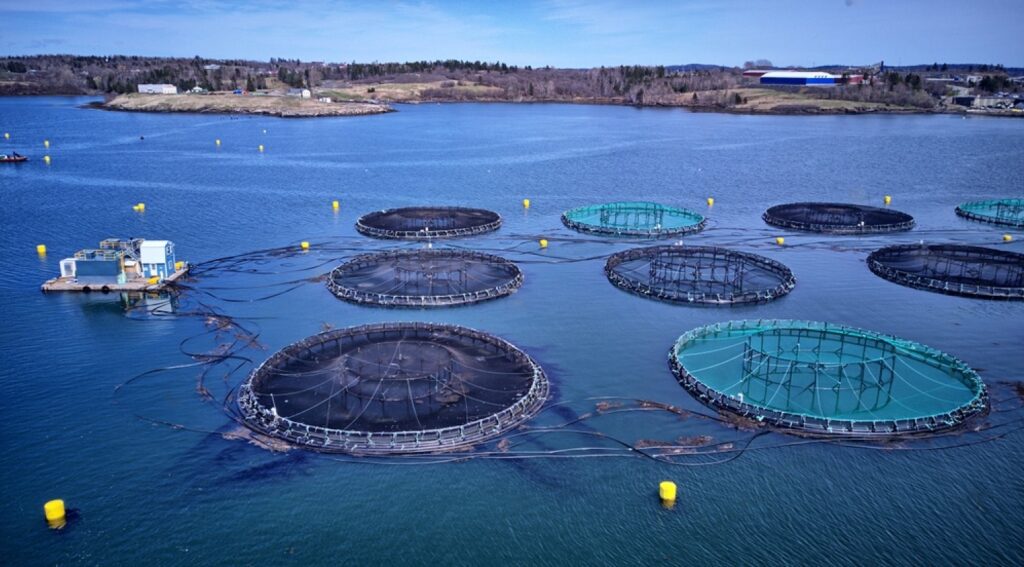A ray of hope in the face of declining wild fish populations and rising seafood demand worldwide is aquaculture, the farming of aquatic species like fish, crustaceans, mollusks, and aquatic plants. Aquaculture is becoming more and more important as a means of ensuring both food security and environmental sustainability as traditional fishing methods become increasingly inadequate to feed a growing population. This blog delves into the realm of aquaculture farming, examining its importance, practices, difficulties, and bright future.
Significance of Aquaculture Farming
A major contributor to satisfying the growing demand for seafood is aquaculture. Since seafood is the main source of protein for more than three billion people, aquaculture presents a viable substitute for wild fisheries. Additionally, it lessens the strain on marine environments by lowering overfishing and promoting biodiversity preservation. As a result, aquaculture makes a substantial contribution to global food security, particularly in areas where traditional fishing methods are insufficient to meet dietary needs.
Advantages of Aquaculture Farming
Methods of Aquaculture Farming
Aquaculture includes a range of techniques designed to meet the unique requirements of distinct aquatic species as well as environmental factors. The most common methods of aquaculture farming are:
- Pond Culture: Growing aquatic life in fenced-in ponds or impoundments is known as pond culture. Fish that live in freshwaters, such as catfish, carp, and tilapia, are most suited for this technique. Pond culture systems come in different sizes, ranging from big commercial operations to small residential ponds. A pond culture cannot succeed unless the water quality, stocking density, and feeding schedules are properly managed.
- Cage Culture: Aquatic creatures are kept in submerged or floating cages or net pens for the purpose of cage culture. Salmon, sea bass, and sea bream are among the marine fish species for which this technique is frequently employed. By keeping waste inside the cages, cage culture minimizes its negative effects on the environment while enabling controlled feeding and health monitoring of the fish.
- Raceway Systems: Raceway systems are made up of long, narrow channels with constant water flow that offer a regulated setting for fish farming. Because it facilitates effective water circulation and trash collection, this technique is frequently used in salmon and trout production.
- Integrated Multi-Trophic Aquaculture (IMTA): The fourth sustainable aquaculture method is called Integrated Multi-Trophic Aquaculture (IMTA), which makes use of complementary interactions between several species to optimize resource use and reduce environmental impact. Seaweed or shellfish, for instance, might be raised alongside finfish to absorb extra nutrients and enhance the quality of the water.
Challenges and Solutions
Aquaculture farming has many advantages, but it also has drawbacks, such as socioeconomic issues, disease outbreaks, and environmental deterioration. Local ecosystems can be upset by the introduction of non-native species, and water pollution and habitat damage can result from overcrowding and poor waste management. Furthermore, disease outbreaks have the power to completely destroy aquaculture enterprises, resulting in enormous financial losses.
Researchers and aquaculture professionals are always coming up with creative ways to solve these problems. Better management techniques can help limit the negative effects on the environment and lower the risk of disease, such as routinely checking the water quality and stocking densities. Additionally, improved disease management plans and breeding practices are making farmed species more resistant to infections.
Future Prospects
Aquaculture farming appears to have a bright future thanks to continuous improvements in research, technology, and sustainable methods. Because they may reduce pollution and water consumption, recirculating aquaculture systems (RAS), which recycle water and regulate environmental factors, are becoming more and more popular. The creation of substitute feeds derived from sustainable resources like algae and insect meal may also help to lessen the industry’s dependency on wild fish stocks.
Furthermore, the development of land-based aquaculture facilities presents fresh possibilities for managed and sustainable fish farming. By placing these facilities inland, the requirement for coastal locations can be decreased, and the negative environmental effects of offshore operations can be lessened.
Conclusion
As a practical response to the problems of overfishing, food hunger, and environmental degradation, aquaculture farming is a fundamental component of a sustainable food supply. Aquaculture has the ability to feed communities, protect marine habitats, and propel global economic development by embracing cutting-edge technologies and best practices. Aquaculture will surely be crucial in determining how we feed and support our expanding population as we work towards a more sustainable future.

